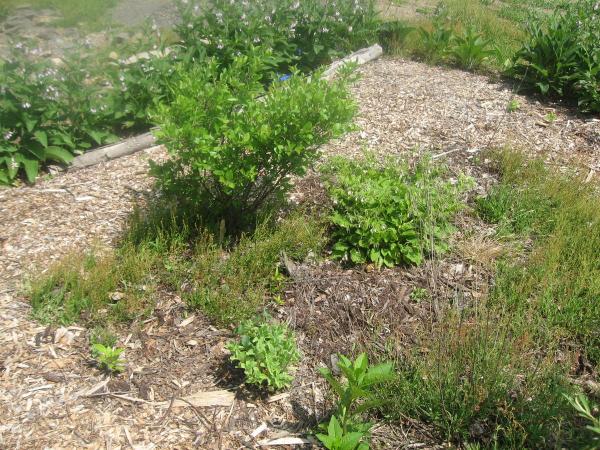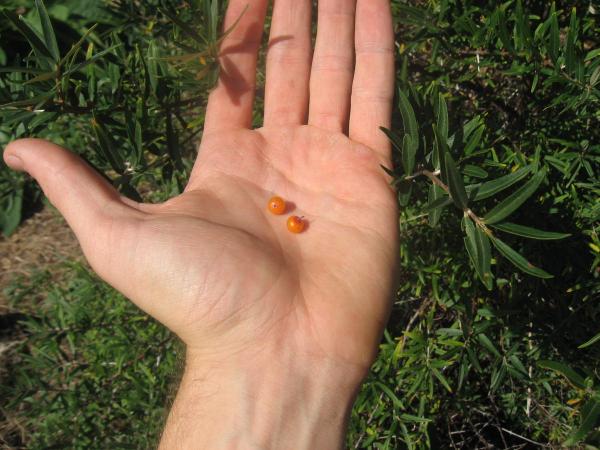Seabeach Polyculture
Description
The "Seabeach" polyculture was designed for the Camp Epworth Apple Forest Garden in 2006. The soil is extremely sandy and the location is full-sun with a bit of a sun-trap, making it quite hot -- both of the main shrubs (SEAberry and BEACH plum) were chosen to adapt to these site conditions.

In this photo you can see the young sedum and dwarf comfrey growing by the beach plum. The best groundcover in this polyculture was not consciously planted -- it is the sheep sorrel (Rumex acetosella), volunteering from the meadow nearby. It spreads quickly but is very low-growing, and does not seem to outcompete our other planted groundcovers. It also tastes great!
The garden actually has two of the same beach plum polyculture, planted next to each other. Here you can see the beach plum of one and the seaberry of the second:

Also visible are a pawpaw tree to the left, and a weed-excluding comfrey hedgerow to the right. Note also the relatively well-covered ground within the patches
In 2008 (after 3 years) we got our first seaberries! They taste like mini-citrus - a burst of delicious sunlight.

The successional horizon of this polyculture has the crowns of the beach plum and the seaberry just barely touching. After 4 fulling growing seasons (starting with 2-year old plants) we're probably 2/3rds of the way there.
Files
| Attachment | Size |
|---|---|
| 362.38 KB | |
| 356.83 KB | |
| 176.7 KB |
